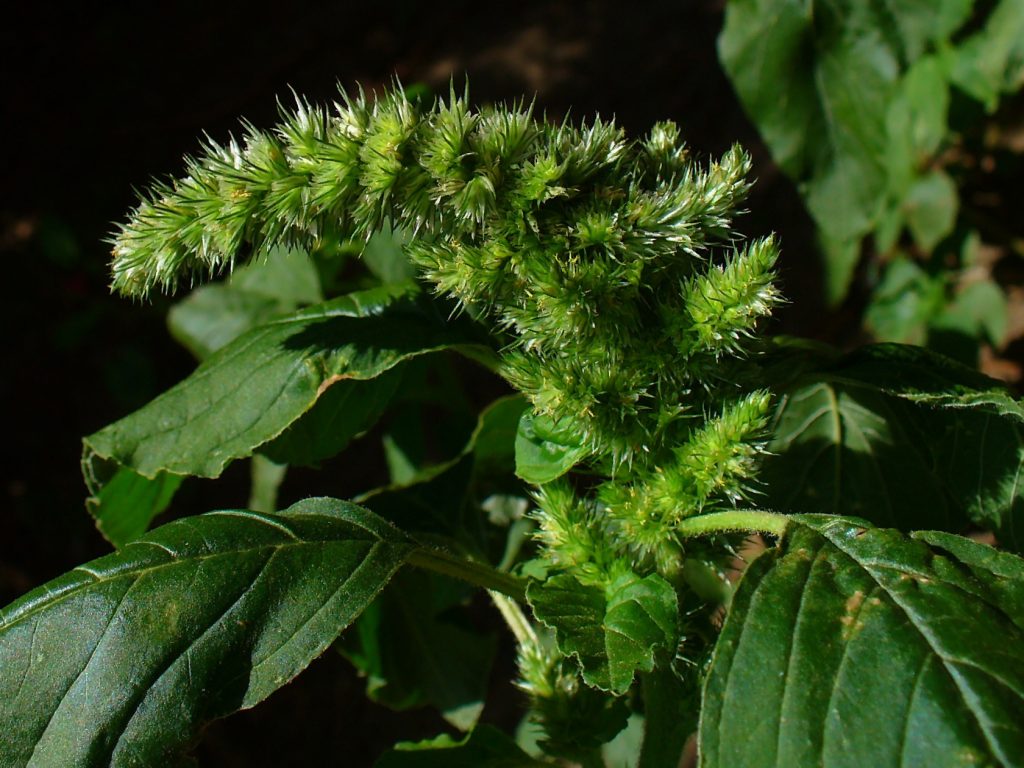Herbicide-resistant weeds are a common topic around here, so we were interested in this new science out of Argentina identifying a new “superweed” resistant to glyphosate, dicamba, and 2,4-D. Plus, the researchers learned more about the mechanism of herbicide resistance in one of the most common weed families – the Amaranths (Amaranthus species).
Farmers throughout the croplands of the U.S are plagued by Palmer amaranth (Amaranthus palmeri), while smooth pigweed (Amaranthus hybridus L.) is the primary culprit in many other countries.
The research team for this paper, published August 2018 in the peer-reviewed journal Agronomy, set out to determine the extend of herbicide resistance in smooth pigweed populations in Argentina. They collected seeds from six populations growing in soybean fields, as well as from a seedstock known to be sensitive to glyphosate and the auxin herbicides (such as 2,4-D and dicamba), to serve as a control. These populations were all treated twice a year with glyphosate, and one was also treated with dicamba.
Grown in pots in a lab, amaranth seedlings from each population were exposed to 2,4-D, dicamba, and glyphosate and the results recorded – a “dose response analysis” in science-speak. If the herbicides were effective, as doses increased, the weight of the plants would go down as they died back. And many weeds did die.
But, the researchers also found that three populations of A. hybridus didn’t die when sprayed with 2,4-D, four populations survived being sprayed with dicamba, and one was immune to glyphosate.
Plus, many of these populations showed resistance to multiple herbicides. Three of the dicamba resistant biotypes was also not affected by 2,4-D, and one of these was also resistant to glyphosate. This is the first known report of resistance to all three of these heavily-used herbicides. That is one monstrous weed.
The team also looked at the mechanism of resistance in Amaranthus biotypes. You might think that weeds use a similar adaptation to resist the effects of herbicides, but actually several different methods have evolved.
For example, wild radishes resist 2,4-D applications by inhibiting cellular transport so the herbicide does not “soak in” to the plant’s cells. In the case of the smooth pigweed populations in Argentina, the researchers found that the herbicide was metabolized, which detoxified it so the weed was not harmed.
An interesting side note – the team decided to also take a look at other means of controlling these Amaranthus populations resistant to multiple herbicides. So, they tried prepping the weeds with piperonil butoxide (PBO), a chemical compound known to work as a “primer” for herbicides to make them more effective. It worked in this case – all the resistant weeds died after treatment with glyphosate or auxin herbicides if once pre-treated with PBO. An example of the old standard, “let’s spray our way out of this mess.”
Source:
Dellaferrera, Ignacio, Cortés, Eduardo, Panigo, Elisa, De Prado, Rafael, Christoffoleti, Pedro, & Perreta, Mariel, “First Report of Amaranthus hybridus with Multiple Resistance to 2,4-D, Dicamba, and Glyphosate,” Agronomy, 2018, 8(8), doi:10.3390/agronomy8080140.

